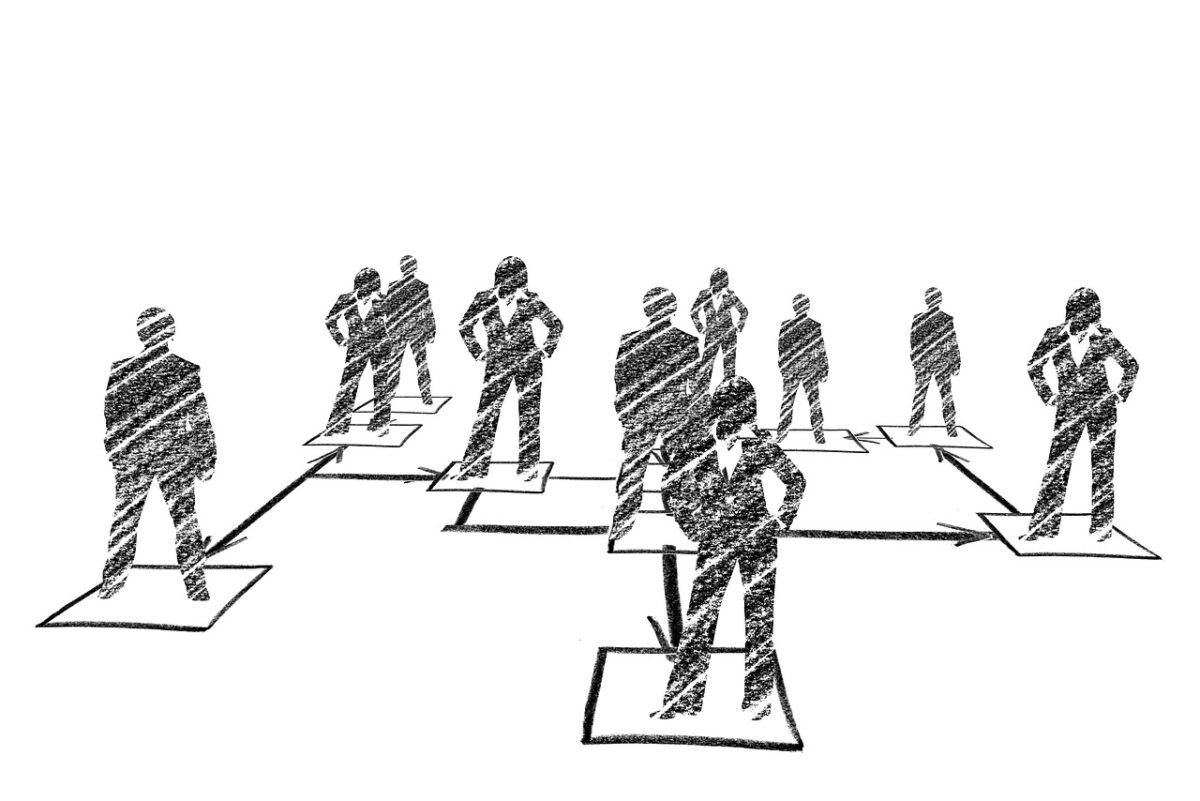Job Titles: A Guide To Job Levels And Ranking

In today’s dynamic business landscape, understanding job titles, levels, and rankings is crucial for effective organisational management and employee satisfaction. Job titles and their corresponding levels help delineate roles and job responsibilities and play a pivotal role in career progression and development. Our guide aims to shed light on the hierarchy of job levels and rankings, offering a comprehensive overview tailored specifically for business owners, Hiring Managers, and HR teams.
We aim to provide clarity and assist in seamlessly structuring organisations, ensuring each role is clearly defined and aligned with the overall business strategy. By exploring this guide, along with our insightful blog on Job Title Examples and utilising our free job advert template, you can enhance your hiring processes and foster a well-structured, motivated workforce.
Highlights And Key Takeaways:
- Job levels refer to the classification of roles within a company, often segmented into distinct tiers such as entry-level, mid-level, senior-level, and executive-level.
- Job rankings help distinguish the complexity, responsibility, and skill required for each position.
- A structured job-leveling system is crucial for effective recruitment, defining clear career paths, enhancing performance management, and fostering organisational career planning.
Quick Links:
- General Job Levels And Job Rankings In A Corporate Environment
- Job Levels And Job Ranking In Different Sectors
- Accounting Job Levels And Ranking
- Banking And Insurance Job Levels And Ranking
- Construction Job Levels And Ranking
- Engineering Job Levels And Ranking
- Healthcare Job Levels And Ranking
- Human Resources Job Levels And Ranking
- IT Job Levels And Ranking
- Leadership Job Levels And Ranking
- Management Job Levels And Ranking
- Marketing Job Levels And Ranking
- Office Administration Job Levels And Ranking
- Sales Job Levels And Ranking
- Social Care Job Levels And Ranking
- Final Thoughts And Hiring Resources
- Job Title FAQs
General Job Levels And Job Rankings In A Corporate Environment
Understanding job levels and rankings is fundamental for creating a structured and efficient organisation. Job levels refer to the classification of roles within a company, often segmented into distinct tiers such as entry-level, mid-level, senior-level, and executive-level. On the other hand, job rankings help distinguish the complexity, responsibility, and skill required for each position. This structured job-leveling system is crucial for effective recruitment, defining clear career paths, enhancing performance management, and fostering organisational career planning.
At the base of the hierarchy are entry-level positions, which typically include job titles such as Junior Analyst, Assistant, or Trainee. These roles are designed for entry-level employees who are just beginning their careers and are often focused on learning and developing foundational skills. Entry-level jobs are essential for bringing new talent into the organisation and setting them on a clear career path.
Mid-level managers, the next tier in the job-leveling system, play a pivotal role. Their roles, often carrying traditional titles like Manager, Supervisor, or Team Leader, involve more responsibility and the ability to manage teams effectively. They act as a bridge, ensuring that projects are executed efficiently and team members are supported, thereby playing a crucial role in the organisational structure.
Senior-level positions include job titles such as Senior Manager, Director, or Vice President. These roles require significant experience and expertise, including strategic decision-making and oversight of large departments or business units. Senior-level employees play a crucial role in shaping the company’s direction and ensuring that mid-level managers and their teams are aligned with organisational goals.
At the top of the hierarchy are executive-level positions, which include titles like Chief Executive Officer (CEO), Chief Financial Officer (CFO), and Chief Operating Officer (COO). These roles involve the highest level of responsibility and influence within a company and focus on long-term strategy, organisational growth, and overall performance. Their decisions and actions significantly impact the company’s operations.
The importance of different job titles and job rankings extends beyond defining roles and job responsibilities. They are instrumental in career planning, providing employees with clear career paths and understanding what is required to advance to higher levels. This transparency is crucial for employee motivation and retention, providing a clear direction for their professional growth.
Job rankings also contribute significantly to organisational efficiency. By clearly defining the hierarchy and job levels, companies can ensure that tasks are appropriately distributed and responsibilities are clear. This clarity helps avoid overlaps and ensures that each employee knows their organisational role.
Our blog What Is A Job Title? provides valuable insights into job titles and their significance. Additionally, our blog A Job Description A—Z Guide: UK Job Description Writing Guide offers comprehensive guidance on including employee development in job descriptions, which is an integral part of effective performance management and career planning.
In summary, understanding the hierarchy of job levels and the importance of job rankings is essential for creating a structured, efficient, and motivated workforce. By clearly defining entry-level, mid-level, senior-level, and executive-level positions, organisations can foster clear career paths, enhance employee development, and ensure overall organisational efficiency.
Job Levels And Job Ranking In Different Sectors

Understanding the hierarchy of job levels and job rankings across different sectors is essential for employers, Hiring Managers, and HR teams to effectively attract and retain talent. Sector-specific job titles and hierarchies provide clarity for job seekers, helping them navigate their career paths and understand potential progression within their chosen field. Below, we explore various sectors, offering job title suggestions and an overview of common job titles and job levels within each.
Accounting Job Levels And Ranking
The accounting sector plays a crucial role in the financial health and compliance of organisations. Professional job titles in this field often reflect a detailed job level structure, guiding career progression from entry-level to executive positions. Accountants in the UK are typically required to obtain qualifications from recognised bodies such as ACCA, CIMA, or ICAEW, with job duties ranging from basic bookkeeping and data entry to strategic financial planning. Below is a breakdown of accounting job levels and rankings:
- Entry-Level Accounting Job Titles: Accounting Clerk, Junior Accountant, Accounting Intern
- Mid-Level Accounting Job Titles: Accountant, Senior Accountant, Cost Accountant
- Senior-Level Accounting Job Titles: Accounting Manager, Financial Controller, Audit Manager
- Executive-Level Accounting Job Titles: Chief Financial Officer (CFO), Finance Director, Chief Accounting Officer (CAO)
Our library of Accounting job descriptions covers more than 40 professional job titles to help you structure your organisation or prepare for recruitment.
Banking And Insurance Job Levels And Ranking
The banking and insurance sectors require professionals with strong analytical skills, customer service expertise, and often an advanced degree for higher-level positions. These fields are essential for financial stability and risk management within the economy. Below is a breakdown of job levels and rankings in banking and insurance:
- Entry-Level Banking and Insurance Job Titles: Bank Teller, Insurance Sales Agent, Customer Service Representative
- Mid-Level Banking and Insurance Job Titles: Loan Officer, Underwriter, Financial Advisor
- Senior-Level Banking and Insurance Job Titles: Branch Manager, Claims Manager, Risk Manager
- Executive-Level Banking and Insurance Job Titles: Chief Risk Officer (CRO), Chief Insurance Officer (CIO), Head of Retail Banking
Our Banking and Insurance job description library includes more than 60 professional job titles to support your hiring and organisational needs.
Construction Job Levels And Ranking

The construction industry relies on diverse job titles that reflect the skills and responsibilities at each job level. From hands-on entry-level roles to strategic executive positions, the detailed job-level structure ensures that projects are completed efficiently and safely. Below is a breakdown of construction job levels and rankings:
- Entry-Level Construction Job Titles: Labourer, Apprentice, Construction Helper
- Mid-Level Construction Job Titles: Site Supervisor, Project Manager, Foreman
- Senior-Level Construction Job Titles: Construction Manager, Contracts Manager, Site Operations Manager
- Executive-Level Construction Job Titles: Director of Construction, Chief Construction Officer (CCO), Head of Project Management
Our library of Construction job descriptions provides over 150 job title suggestions to help you build a well-structured team.
Engineering Job Levels And Ranking
Engineering roles require a high level of technical expertise and problem-solving skills. The job hierarchy in this sector reflects the progression from foundational engineering tasks to complex project management and innovation leadership. Below is a breakdown of engineering job levels and rankings:
- Entry-Level Engineering Job Titles: Graduate Engineer, Junior Engineer, Engineering Technician
- Mid-Level Engineering Job Titles: Engineer, Senior Engineer, Project Engineer
- Senior-Level Engineering Job Titles: Engineering Manager, Principal Engineer, Lead Engineer
- Executive-Level Engineering Job Titles: Chief Engineer, VP of Engineering, Director of Engineering
Our Engineering job descriptions cover more than 50 technical and leadership positions to support your recruitment and organisational planning.
Healthcare Job Levels And Ranking
The healthcare sector encompasses many job titles and duties, from patient care to medical administration. Different titles and qualifications reflect the expertise and responsibilities at each job level. Below is a breakdown of healthcare job levels and rankings:
- Entry-Level Healthcare Job Titles: Healthcare Assistant, Junior Nurse, Medical Receptionist
- Mid-Level Healthcare Job Titles: Registered Nurse, Medical Practitioner, Allied Health Professional
- Senior-Level Healthcare Job Titles: Senior Nurse, Consultant, Clinical Manager
- Executive-Level Healthcare Job Titles: Chief Medical Officer (CMO), Director of Nursing, Head of Clinical Services
Our Healthcare job descriptions provide detailed role definitions for more than 300 positions to help streamline your hiring process and organisational structure.
Human Resources Job Levels And Ranking

Human resources (HR) professionals manage employees’ recruitment, development, and well-being. Entry level job titles in HR start with support roles, progressing to strategic leadership positions. Below is a breakdown of HR job levels and rankings:
- Entry-Level HR Job Titles: HR Assistant, HR Coordinator, Recruiting Assistant
- Mid-Level HR Job Titles: HR Specialist, HR Manager, Training and Development Manager
- Senior-Level HR Job Titles: Senior HR Manager, HR Director, Talent Acquisition Director
- Executive-Level HR Job Titles: Chief Human Resources Officer (CHRO), VP of Human Resources, Head of People Operations
Our extensive HR job description library provides a framework for defining the roles and responsibilities across more than 30 job titles.
IT Job Levels And Ranking
The IT sector includes a variety of creative titles and roles, from software development to system administration. Job levels reflect the technical expertise and leadership required at each stage. Below is a breakdown of IT job levels and rankings:
- Entry-Level IT Job Titles: IT Support Technician, Junior Developer, Help Desk Analyst
- Mid-Level IT Job Titles: IT Analyst, Systems Administrator, Network Engineer
- Senior-Level IT Job Titles: IT Manager, Senior Developer, Infrastructure Manager
- Executive-Level IT Job Titles: Chief Information Officer (CIO), IT Director, Chief Technology Officer (CTO)
Our IT job descriptions encompass over 130 creative and technical positions to support your organisational needs.
Leadership Job Levels And Ranking
Leadership positions are crucial for strategic planning and guiding an organisation towards its goals. The job hierarchy in this sector includes roles that focus on managing teams and driving business success. Below is a breakdown of leadership job levels and rankings:
- Entry-Level Leadership Job Titles: Team Leader, Supervisor, Shift Leader
- Mid-Level Leadership Job Titles: Manager, Senior Manager, Department Head
- Senior-Level Leadership Job Titles: Director, Senior Director, Business Development Manager
- Executive-Level Leadership Job Titles: Chief Executive Officer (CEO), Chief Operating Officer (COO), Executive Vice President (EVP)
Our Leadership job description library provides insights into 10 strategic and managerial roles to enhance your organisation’s leadership structure.
Management Job Levels And Ranking

Management roles require top talent and strategic thinking to oversee operations and drive organisational success. Job levels in management range from supervisory roles to executive leadership. Below is a breakdown of management job levels and rankings:
- Entry-Level Management Job Titles: Assistant Manager, Junior Manager, Team Supervisor
- Mid-Level Management Job Titles: Manager, Department Head, Operations Manager
- Senior-Level Management Job Titles: Senior Manager, General Manager, Regional Manager
- Executive-Level Management Job Titles: Vice President, Managing Director, Chief Operating Officer (COO)
Our library of Management job descriptions offer detailed insights into 20 roles that attract top talent and support strategic growth.
Marketing Job Levels And Ranking
The marketing department thrives on creativity and innovation, with job levels reflecting unique job titles and responsibilities. Below is a breakdown of marketing job levels and rankings:
- Entry-Level Marketing Job Titles: Marketing Assistant, Junior Marketing Executive, Marketing Associate, Social Media Coordinator
- Mid-Level Marketing Job Titles: Marketing Specialist, Marketing Manager, Digital Marketing Manager
- Senior-Level Marketing Job Titles: Senior Marketing Manager, Marketing Director, Brand Manager
- Executive-Level Marketing Job Titles: Chief Marketing Officer (CMO), VP of Marketing, Director of Communications
Our Marketing job descriptions cover almost 70 creative job titles and roles to support your marketing department’s success.
Office Administration Job Levels And Ranking
Office administration roles are vital for the smooth operation of any organisation. An entry-level job title in this sector focuses on support tasks, while higher levels involve managerial and strategic responsibilities. Below is a breakdown of office administration job levels and rankings:
- Entry-Level Office Administration Job Titles: Administrative Assistant, Receptionist, Office Clerk
- Mid-Level Office Administration Job Titles: Office Manager, Executive Assistant, Administrative Coordinator
- Senior-Level Office Administration Job Titles: Senior Office Manager, Operations Manager, Office Director
- Executive-Level Office Administration Job Titles: Director of Administration, Chief Administrative Officer (CAO), Head of Office Management
Our portfolio of Office Administration job descriptions provide a comprehensive view of almost 70 roles essential for organisational efficiency.
Sales Job Levels And Ranking

Sales roles are critical for driving revenue and business growth. Entry level positions often focus on direct sales efforts and progressing to strategic sales management and leadership roles. Below is a breakdown of sales job levels and rankings:
- Entry-Level Sales Job Titles: Sales Representative, Sales Associate, Sales Trainee
- Mid-Level Sales Job Titles: Sales Manager, Account Manager, Territory Sales Manager
- Senior-Level Sales Job Titles: Senior Sales Manager, Regional Sales Director, National Sales Manager
- Executive-Level Sales Job Titles: Chief Sales Officer (CSO), VP of Sales, Head of Sales Operations
Our Sales job description library provides a framework for identifying and recruiting top sales talent at every job level, covering more than 90 sales titles.
Social Care Job Levels And Ranking
Social care professionals support vulnerable individuals and communities. Entry-level professionals often start in supportive roles, with career progression leading to management and executive positions. Below is a breakdown of social care job levels and rankings:
- Entry-Level Social Care Job Titles: Care Assistant, Support Worker, Community Care Worker
- Mid-Level Social Care Job Titles: Social Worker, Senior Support Worker, Case Manager
- Senior-Level Social Care Job Titles: Social Work Manager, Care Manager, Service Manager
- Executive-Level Social Care Job Titles: Director of Social Services, Chief Social Care Officer (CSCO), Head of Community Services
Our portfolio of social care job descriptions offer a detailed overview of more than 20 roles dedicated to improving lives and supporting communities.
Final Thoughts And Hiring Resources

Understanding job titles and rankings across different sectors is essential for employers and job seekers navigating the job market. Recognising the importance of a clear job title and detailed job level structure aids in career planning, recruitment, and overall organisational efficiency. Entry-level positions provide foundational opportunities for new employees, while higher-level roles define pathways for career advancement and strategic leadership within an organisation.
Our guide is a valuable resource for business owners, Hiring Managers, and HR teams, helping create a clear and effective organisational structure. By understanding the various job titles and levels specific to different sectors, employers can better define roles, responsibilities, and career paths, ultimately improving employee satisfaction and organisational performance.
We encourage business owners, Hiring Managers, and HR teams to regularly evaluate and refine their job hierarchies to ensure they meet the evolving needs of their organisations and the job market. Doing so can enhance performance management, support career development, and attract top talent.
Our Hiring Resources:
- Job Advert Template
- Job Description Template
- Job Description Library
- Candidate Experience Guide
- SME Recruitment Guide
These recruitment resources are designed to streamline your hiring process, ensure comprehensive job descriptions, and enhance the candidate experience, contributing to a more effective and efficient recruitment strategy.
Job Title FAQs
Here we answer Human Resources Manager, employer, and hiring professionals questions on choosing the right job title and job title hierarchy:
The corporate hierarchy is a structured progression that typically starts with entry-level positions, where employees gain foundational skills and experience. This is followed by intermediate or mid-level roles, which require more specialised knowledge and often involve some level of supervision or project management. The next step is senior or advanced roles, characterised by significant expertise, leadership responsibilities, and strategic decision-making. The hierarchy culminates in executive positions, including directors, vice presidents, and C-suite executives, who oversee entire departments, set long-term goals, and drive the company’s vision.
The hierarchy of work roles generally starts with operational or support staff who handle the day-to-day tasks essential to the business’s functioning. Above them are supervisory roles, where individuals manage small teams and ensure that projects stay on track. Middle management follows, involving roles like department managers or team leaders, who oversee multiple teams and coordinate efforts across different areas. Senior management includes roles such as general managers or directors, focusing on broader strategic initiatives and cross-departmental alignment. At the top are executive roles, where individuals like CEOs and CFOs set overall company strategy and make high-level decisions.
Corporate titles often begin with assistants or coordinators at the entry level, progressing to specialists and analysts in more focused roles. Supervisors and team leaders form the next tier, managing small groups and projects. Middle management includes managers and directors who oversee larger teams and critical business functions. Senior management titles such as vice president or senior director indicate higher responsibility and influence. At the pinnacle are executive titles like chief executive officer (CEO), chief financial officer (CFO), and chief operating officer (COO), who steer the company’s strategic direction and major initiatives.
Job titles in the corporate world are diverse and can vary widely across industries and organisations. Common titles at entry and junior levels include Assistant, Coordinator, Specialist, Analyst, and Associate. Mid-level roles often feature titles such as Manager, Director, or Supervisor. Senior positions may carry titles like Vice President, Senior Manager, or Executive Director. At the executive level, titles include Chief Executive Officer (CEO), Chief Financial Officer (CFO), Chief Operating Officer (COO), and Chief Marketing Officer (CMO). Additionally, many specialised titles reflect specific functions, such as Marketing Manager, IT Specialist, Sales Director, and Human Resources Coordinator.



